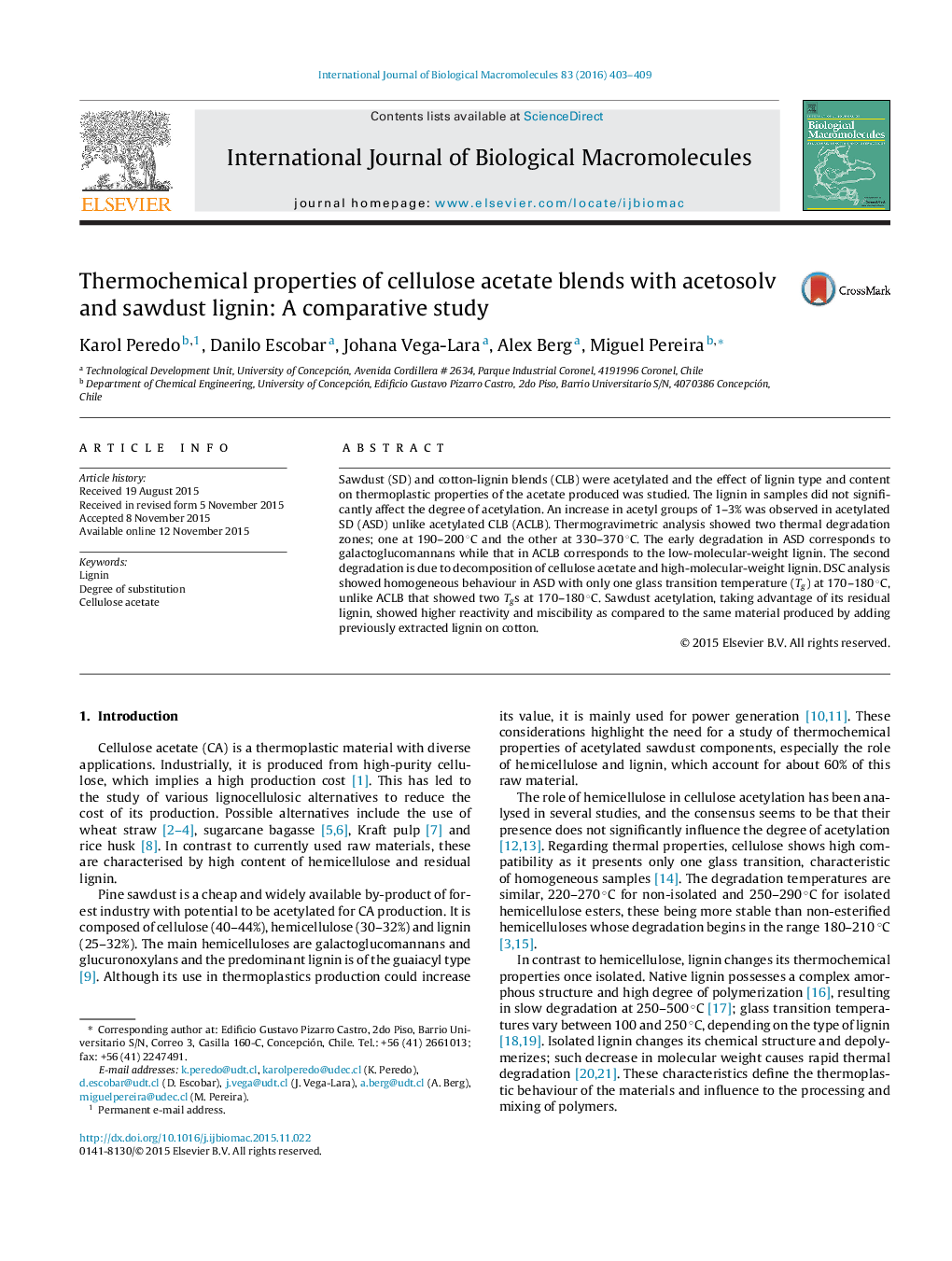| Article ID | Journal | Published Year | Pages | File Type |
|---|---|---|---|---|
| 1986082 | International Journal of Biological Macromolecules | 2016 | 7 Pages |
Sawdust (SD) and cotton-lignin blends (CLB) were acetylated and the effect of lignin type and content on thermoplastic properties of the acetate produced was studied. The lignin in samples did not significantly affect the degree of acetylation. An increase in acetyl groups of 1–3% was observed in acetylated SD (ASD) unlike acetylated CLB (ACLB). Thermogravimetric analysis showed two thermal degradation zones; one at 190–200 °C and the other at 330–370 °C. The early degradation in ASD corresponds to galactoglucomannans while that in ACLB corresponds to the low-molecular-weight lignin. The second degradation is due to decomposition of cellulose acetate and high-molecular-weight lignin. DSC analysis showed homogeneous behaviour in ASD with only one glass transition temperature (Tg) at 170–180 °C, unlike ACLB that showed two Tgs at 170–180 °C. Sawdust acetylation, taking advantage of its residual lignin, showed higher reactivity and miscibility as compared to the same material produced by adding previously extracted lignin on cotton.
